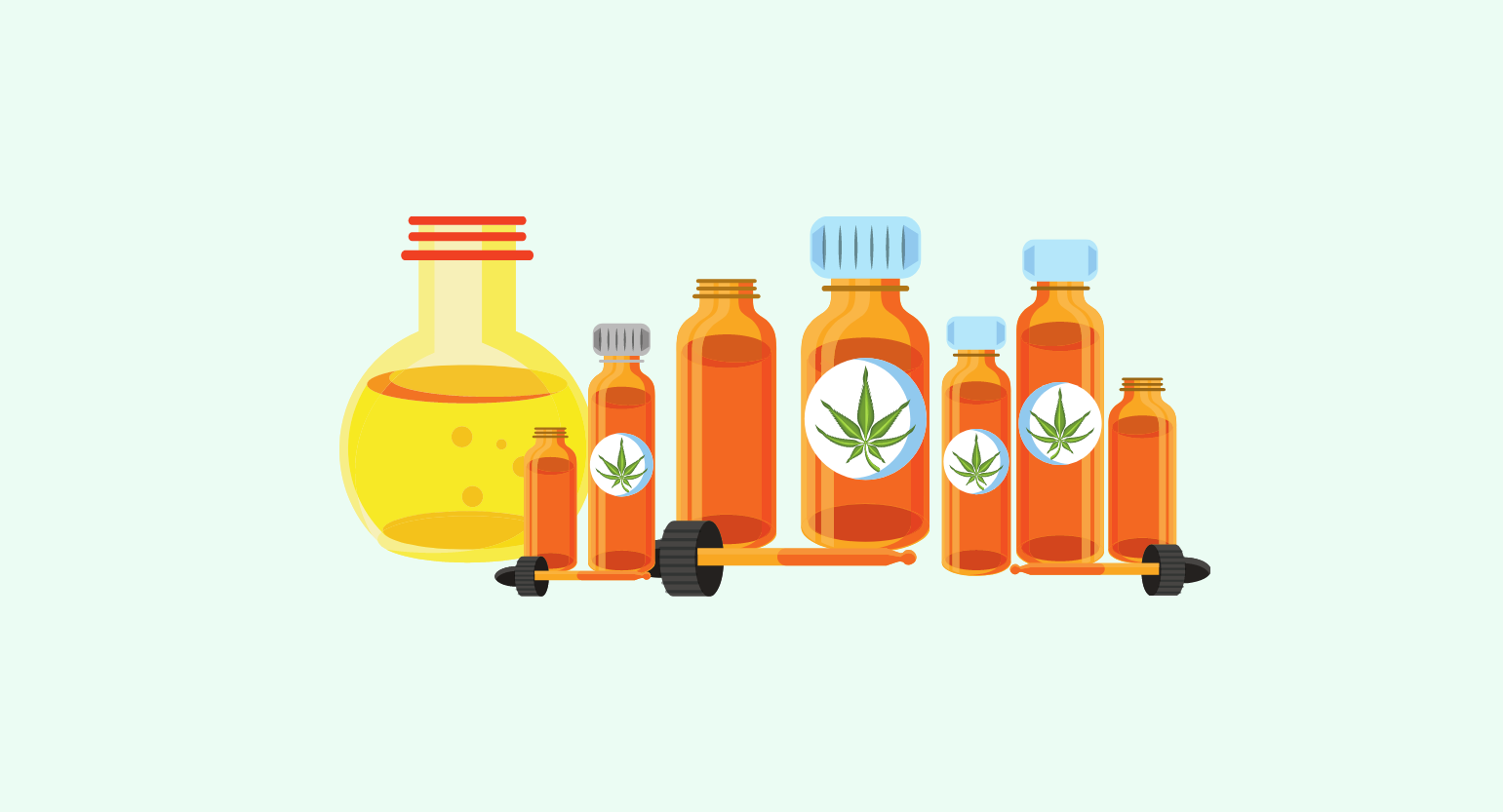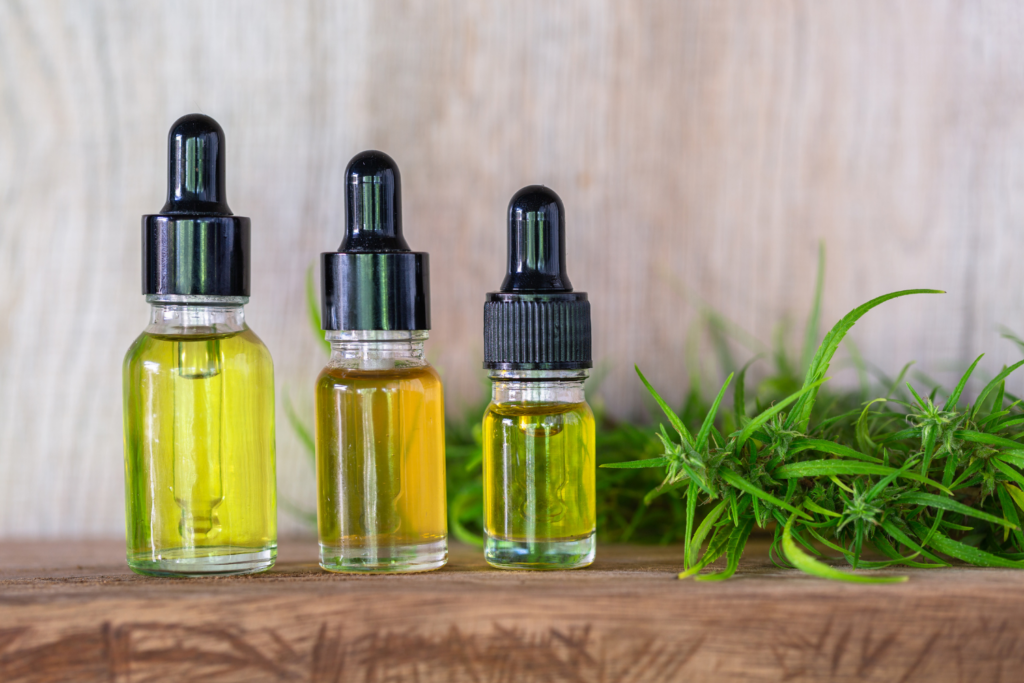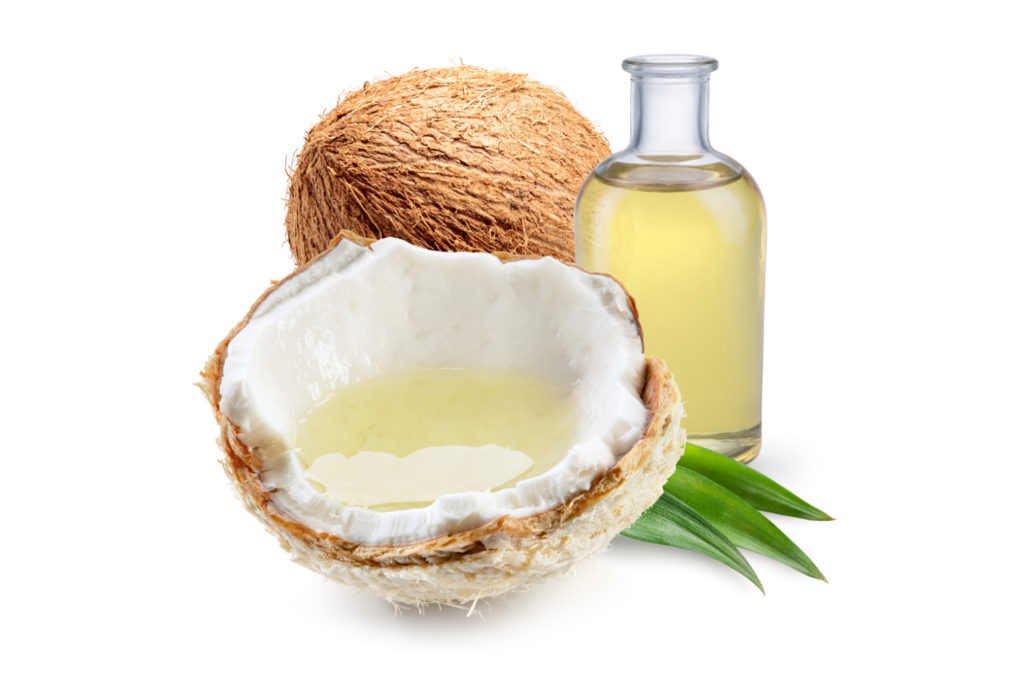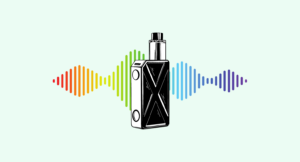
Evidence based
What Are the Different Kinds of CBD Oil?
Confused about the different kinds of CBD oil?
We breakdown all the CBD oil types and explore the pros and cons of each.
CBD oil comes in many different forms.
Depending on how you break it down, there are several categories of CBD oil.
You can find full-spectrum, broad-spectrum, and isolate CBD oils. CBD oil also comes in various flavors, potencies, and carrier oils.
Here’s every type of CBD oil explained.
What Are The Different Types of CBD Oils?
On the surface, it may seem like all CBD oils are the same — but this isn’t the case. There are a lot of variables that go into the production of a CBD oil that makes them all unique from one another.
CBD oils can be divided into a variety of different categories:
- By spectrum — CBD oils can be made to contain all the active ingredients in hemp or just certain elements
- By potency — CBD oils can be broken down into three main potencies
- By carrier oil — there are many different types of carrier oils that can be used to make CBD oil
- By formula — some CBD oils have flavor added; some don’t; others have additional ingredients to boost their overall effect

Different Types of CBD Oil Spectrums
The spectrum of CBD oil refers to the range of ingredients included in the final bottle.
The hemp plant produces hundreds of individual compounds. There are dozens of individual cannabinoids that go above and beyond CBD, as well as a variety of different terpenes.
Some companies maintain the natural state of cannabinoids and terpenes in the final bottle. These are called full-spectrum CBD oils. They contain many different compounds.
Other companies choose to remove the delta 9 THC content (which is the main psychoactive component in marijuana). These oils are referred to as broad-spectrum.
And finally, some companies remove everything except the CBD — these are called CBD isolate oils.
Let’s explore each one in a little more detail:
1. Full-Spectrum CBD Oil
Full-spectrum extracts contain the full spectrum of phytochemicals that are found naturally in the hemp plant — including the trace amounts of THC. Full-spectrum extracts are regarded by experts as being the most effective form of CBD product.
This is because of something called the entourage effect.
Nature has designed cannabis to be a powerful, multifaceted medicine containing hundreds of different compounds. These compounds work together, synergizing to produce more potent effects than they can on their own.
As such, most people report complete relief when they use full-spectrum extracts. However, because THC remains illegal, some people are understandably hesitant to order full-spectrum extracts online. In some states, they are not available at all.
2. Broad-Spectrum CBD Oil
Broad-spectrum CBD oils usually contain all of the stuff mentioned above except for THC.
Broad-spectrum extracts are thus a good option for people who live in places where marijuana (and therefore THC) are strictly regulated.
The difference between broad-spectrum and full-spectrum, in terms of benefits, is pretty negligible. The total THC content of any full-spectrum extract should never be more than 0.3%. Missing out on this minuscule amount of THC won’t make much of a change.
3. CBD Isolate Oil
CBD isolate oils are for those who are content simply using CBD. These oils are generally made using an extracted form of CBD, referred to as isolate. This isolated CBD powder is infused in a carrier oil and sold as-is.
CBD isolate oils are generally a lot cheaper than broad- and full-spectrum extracts. If you find that you can enjoy the benefits of CBD on its own, then you might be better off using an isolate oil and saving a few bucks.
The main reason for using a CBD isolate is to avoid any chances of failing a drug test. While the chances are very low, it’s technically possible to fail a drug test for THC from full-spectrum CBD oils that contain THC (albeit in concentrations below 1%).
The second main reason for using an isolated oil is to avoid potential interactions with other medications. By limiting the CBD oil to just one active ingredient, it’s easier for doctors to predict the chances of negative drug interaction with a CBD product.
Different Kinds of CBD Oil Potencies
CBD oils can come in a variety of different potencies. The potency determines how much oil you need to use to receive a certain amount of CBD. Remember, the potency isn’t how much CBD that you will have in your overall product. It’s the amount of CBD that you’ll be ingesting per mL of it.
Here is a general classification of the potencies of CBD oils.
1. Low Potency CBD Oil
(10–25 mg/mL)
Low potency CBD oils are only really useful for dogs, cats, children, or people dabbling in CBD for the first time.
Low potency oils are low-value compared to the higher potency options, and you’ll likely find a bottle doesn’t last you very long.
Even if you’re especially sensitive to CBD, it’s just as easy to only take a small dose of a more potent oil. You’re going to save a lot of money this way because CBD companies charge the highest rate per milligram of CBD for the low-potency range.
2. Medium Potency CBD Oil
(25–50 mg/mL)
Medium potency oils are the best starting point for most people. The sticker price isn’t nearly as high as the higher potency stuff, but it still comes at a decent value compared to low potency oils.
3. High Potency CBD Oil
(50 – 100 mg/mL)
High potency oils are becoming much more popular these days as people learn how much more cost-effective they truly are.
When first shopping for CBD, it seems crazy that a bottle of this stuff could cost more than $100. Instead, they opt for the lower potency product that runs for $30 instead.
Over the long run, the $30 bottle is going to become much more expensive when you have to keep coming back for more. It’s much better to get a high potency bottle of CBD if you intend to use it frequently and just take less oil per dose.
4. Ultra High Potency CBD Oil
(over 100 mg/mL)
This potency range is usually reserved for people who have a lot of experience with CBD and know their dose and how they respond inside and out.
These oils are extremely potent, and it doesn’t take much to go overboard if you’re sensitive to CBD. Just one milligram of this stuff (30 drops) has a dose of 100 mg or more. The standard CBD dose is usually between 20 and 60 — so this is some seriously potent stuff for sure.
These oils are usually pretty expensive overall but have the lowest cost per milligram of CBD of them all.

Different Kinds of CBD Oil Formulas
CBD oils may come with just the pure hemp extract and a carrier oil, or they can come with other ingredients to improve their flavor or effects.
Here’s a breakdown of the different types of CBD oil formulations:
1. Bare CBD Oils (AKA “Naked” CBD Oils)
Barebones CBD oils contain nothing but pure hemp extract and a carrier oil base.
These oils have a natural “hemp” flavor — which is somewhat bitter and green. Some people really like the flavor; others find it unpalatable.
These oils are generally the most affordable when you compare the cost per milligram of CBD because there’s nothing to them. They’re a good option for people who don’t mind the taste of CBD oil or plan to mix the oil with other foods or drinks to mask the taste.
These oils are good “all-arounders” — providing all the benefits associated with CBD but lacking in the benefits other ingredients may add in products designed for a specific purpose or application.
2. Flavored CBD Oils
A flavored CBD oil is usually flavored with hemp-derived or cannabis-derived terpenes (CDT). This means the terpenes found in hemp are recombined and added to the final product to improve the taste.
Some companies add other flavoring agents, like sweeteners, synthetic flavorings, honey, or other sources of flavor to the mix.
Flavored CBD oils usually don’t cost any extra compared to the bare-bones CBD oils but offer a big improvement in the overall experience by masking hemp’s bitter taste.
3. Holistic CBD Oils
A holistic CBD oil is an oil that contains other ingredients in the formula. These other ingredients are usually other herbs, like lavender, hops, mint, corydalis, or turmeric.
The purpose of adding these other ingredients in a holistic oil is to make the oil more effective for a specific condition. They aren’t as well-rounded as a naked CBD oil but tend to be much better if you’re trying to manage a specific condition.
Here are a few examples of holistic CBD oil ingredients:
- For anxiety — CBD with passionflower, valerian, or L-theanine
- For pain — CBD with corydalis, turmeric, or California poppy
- For sleep — CBD with melatonin, valerian, or hops
- For autoimmunity or inflammation — CBD with turmeric or boswellia
Different Kinds of CBD Carrier Oils
There are a number of different carrier oils that can be used to infuse CBD and other cannabinoids.
These are the most common carrier oils used in the market.
1. MCT Oil-Based CBD Oil
MCT stands for medium-chain triglycerides. MCTs are vital components of human health. They’re a type of fat that is found in your blood. Your body uses MCTs for energy; calories that aren’t burned right away are converted into triglycerides.
MCTs are the best in terms of overall health improvement. MCTs contain 12 carbons in their molecular structure, compared to long-chain triglycerides (13-21 carbons) and short-chain triglycerides (less than 6 carbons).
What does that all mean? Well, MCT oil is very easy for your body to absorb and process. Once consumed, it quickly makes its way into the bloodstream. Your blood rushes the MCTs to your liver, where they are quickly converted into usable energy.
MCT oil has been associated with a number of health benefits:
- It has been used to improve mental and emotional health. MCTs can restore cognitive function, improve memory, and help people manage emotional imbalances.
- MCTs are great for providing quick and sustainable energy.
- MCT oil has been used in a number of weight loss programs and can help improve the results of diet and exercise.
- MCTs, help to keep the blood in good shape by lowering cholesterol and blood sugar.
And all of these benefits come from MCT oil itself. When combined with CBD, you can expect your MCTs to deliver a serious nutritional and medicinal punch.
MCT oil also helps you get more bang for your buck. MCTs can increase the bioavailability of CBD since they’re easier to digest and absorb compared to other fats and oils.
MCTs are usually derived from coconut oil. It’s one of the highest natural sources of MCTs. Other sources of MCTs include some of the healthiest foods on the planet: avocados, olives, and sesame.
2. Hemp Seed Oil-Based CBD Oil
Hemp seed oil and CBD both come from the same plant, so it makes a lot of sense to combine the two.
Using hemp seed oil is one of the most sustainable options for producing CBD oils. By using both oil and cannabinoids produced from the same farm, we can reduce the amount of shipping, transportation, and fuel involved in importing other oils.
Many people confuse hemp seed oil and CBD oil. CBD is derived from the hemp flowers, whereas hemp seed oil, as you probably figured out, comes from the seeds.
The seeds have different concentrations of medicinal and nutritional compounds.
They’re a rich source of fat-soluble vitamins, such as vitamin E. They’re also a great source of phosphorus, magnesium, calcium, and iron. Most of these minerals, as well as many essential fatty acids, make their way into the seeds’ oil.
When CBD is added to the mixture, the hemp seed oil is transformed from a health-boosting nutritional supplement to a powerhouse. Many of the vitamins, minerals, and antioxidants found in hemp seed oil synergize well with CBD.
The result is that you’ll be able to enjoy your CBD with some additional improvements. Hemp seed oil, like MCTs, can help reduce cholesterol and blood pressure. Hemp seed oil is also an anti-inflammatory, just like CBD, so the combination can produce much more powerful relief.
3. Olive Oil-Based CBD Oil
Olive oil is an oil that we’re all pretty familiar with. It’s not only useful in the kitchen; it can be a great carrier oil for CBD.
Olive oil is a rich source of iron, vitamin K, vitamin E, and antioxidants. It’s well-researched, and its health benefits are widely acknowledged.
It’s relatively shelf-stable, although less so than some of the other oils on this list. You’ll have to use an olive oil CBD product within a few months. This is one of the reasons that most companies avoid using olive oil in their products.
Olive oil is also thicker than some of the others that we’ve mentioned. This can be undesirable.
If you’re interested in making your own CBD oil, olive oil is a great choice to start with. It’s readily available. Most people already have some in their kitchen. It’s easy and forgiving to work with.
All you need to do is dissolve some CBD into the olive oil. This can be done by mixing some CBD isolate and olive oil together in a glass jar and then gently heating it up. As it heats up, the CBD will diffuse into the solution.
Once it’s diffused, cap it up. Make sure to use it within a few months.
4. Coconut Oil-Based CBD Oil
Coconut oil is the source of most MCT oil, so you can expect to experience many of the same benefits as you would if your CBD oil was made from MCTs.
Coconut oil has a higher melting point than most of the other oils on this list. This means that you’re more likely to find your coconut-based CBD oil in a solid state. This can make it pretty tough to suck up into a dropper!
This is why you don’t see a lot of CBD oils made from coconut oil. However, lots of other CBD products — salves and lotions, for example — are made with coconut oil.

Why Do People Use CBD Oil?
There are a lot of benefits to using CBD oil. The most common three are for alleviating chronic pain, reducing anxiety, and improving sleep quality — but there’s a lot more this supplement has to offer too.
The main benefits of CBD oil come from its ability to regulate homeostasis through the endocannabinoid system (ECS). A big aspect of this is inflammation — which is at the root of many health issues.
1. To Manage Chronic Pain
CBD proves to have a number of different mechanisms by which it can help reduce pain. It can directly prevent the body from sending pain signals. CBD also helps to reduce inflammation which is a source of pain.
The best CBD oils for pain management are full-spectrum holistic blends formulated with herbs like corydalis or California poppy. Aim for high to ultra-high potency for this application.
Related: Best CBD Oils For Pain.
2. To Improve Sleep
CBD helps to promote relaxation and can be a useful tool for people struggling with insomnia. Most people find they need to use a higher dose of CBD to get the sedative effects.
Take your CBD oil at least an hour before your intended bedtime to give the CBD time to take effect. Most people using CBD for sleep will take a dose roughly 25% higher than they would for something like pain or anxiety.
Generally speaking: The best kind of CBD oil for sleep are holistic full-spectrum high-potency CBD oils with ingredients like melatonin or valerian.
Related: Best CBD Oils For Sleep.
3. To Reduce Stress & Anxiety
CBD can reduce both the physical and psychological symptoms of stress and anxiety. It can reduce blood pressure and heart rate as well as quell the mental disquiet associated with these emotions.
The best CBD oils for anxiety are those with moderate to high potencies. Most people find the greatest relief from full-spectrum CBD oils for anxiety because the THC content can actually help with the anxiety. In high doses, THC can induce anxiety, but lower doses you’d expect to find in a CBD oil have the opposite effect.
Related: Best CBD Oils For Anxiety.

Final Thoughts: What’s the Best Kind of CBD Oil For Me?
“CBD oil” can mean many different things.
From full-spectrum tinctures based in MCT oils to CBD isolate infused in hemp oil, there are many different varieties of this useful supplement.
There’s no one kind of CBD oil that’s necessarily better than the rest — they all have their pros and cons.
With that said, in general, a full-spectrum, moderate to high-potency oil is the best option for most people. The exceptions would be people who have to take drug tests for work or athletics.
If you’re using CBD oil for a specific condition, a holistic blend that contains other useful ingredients for supporting that condition is usually preferred.













